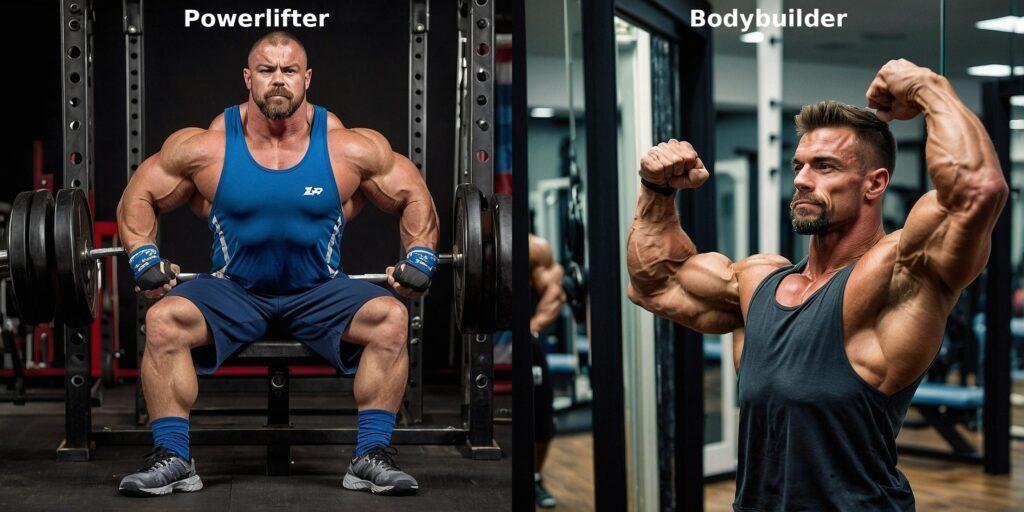
Choosing the right training style can be a game-changer for your fitness journey. With over 30 years of experience in both powerlifting and bodybuilding, I’ve trained using methods from each discipline, learning the nuances and benefits they offer. In this article, we’ll explore the fundamentals of powerlifting and bodybuilding, compare their methods and objectives, and discuss how you can leverage the strengths of each to achieve your fitness goals.
Understanding the Fundamentals of Powerlifting and Bodybuilding
Competitive Powerlifting
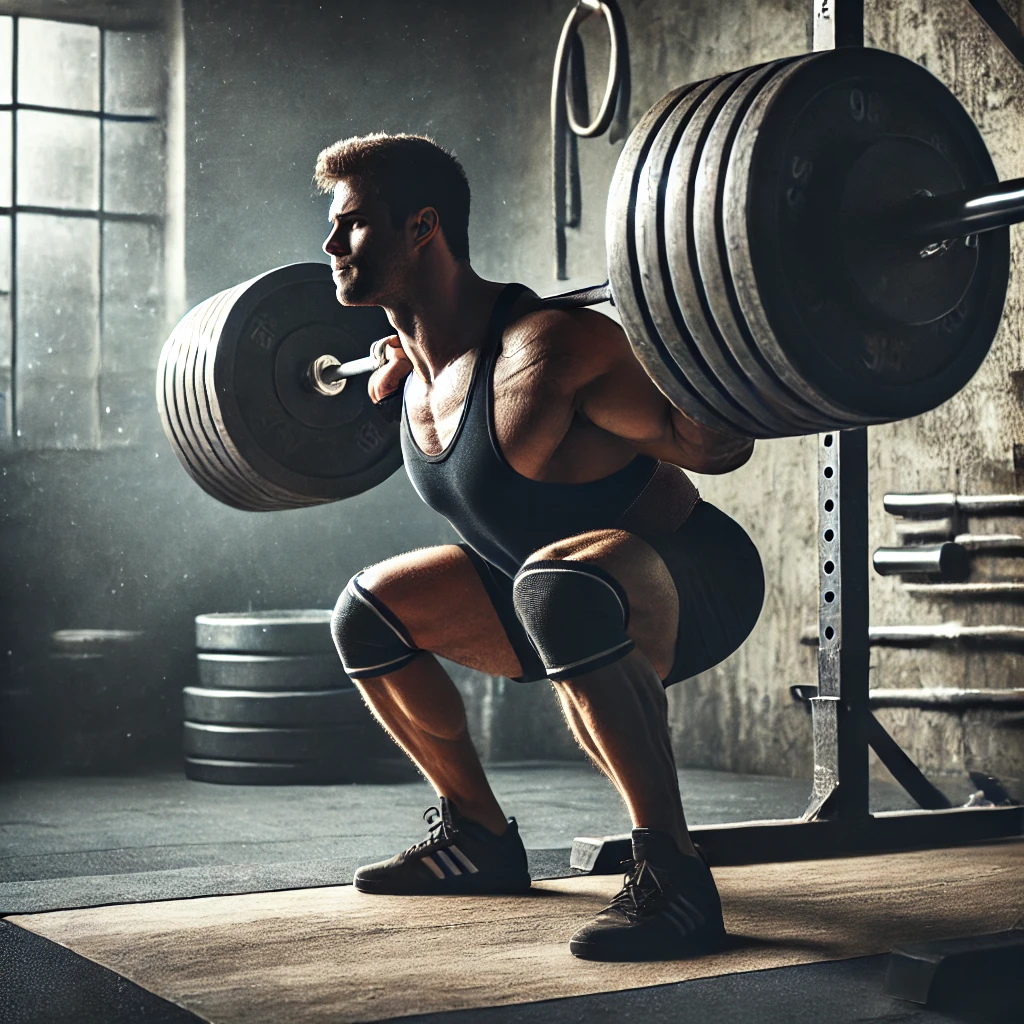
Competitive powerlifting is all about raw strength. The sport focuses on three main lifts: the squat, bench press, and deadlift. These compound movements are performed at maximal weights to test overall strength. Training routines in powerlifting typically involve low reps and heavy weights, with a strong emphasis on progressive overload and periodization to continually push the boundaries of your strength. This approach not only builds incredible strength but also substantial muscle mass, as increased strength often correlates with increased muscle size.
Bodybuilding
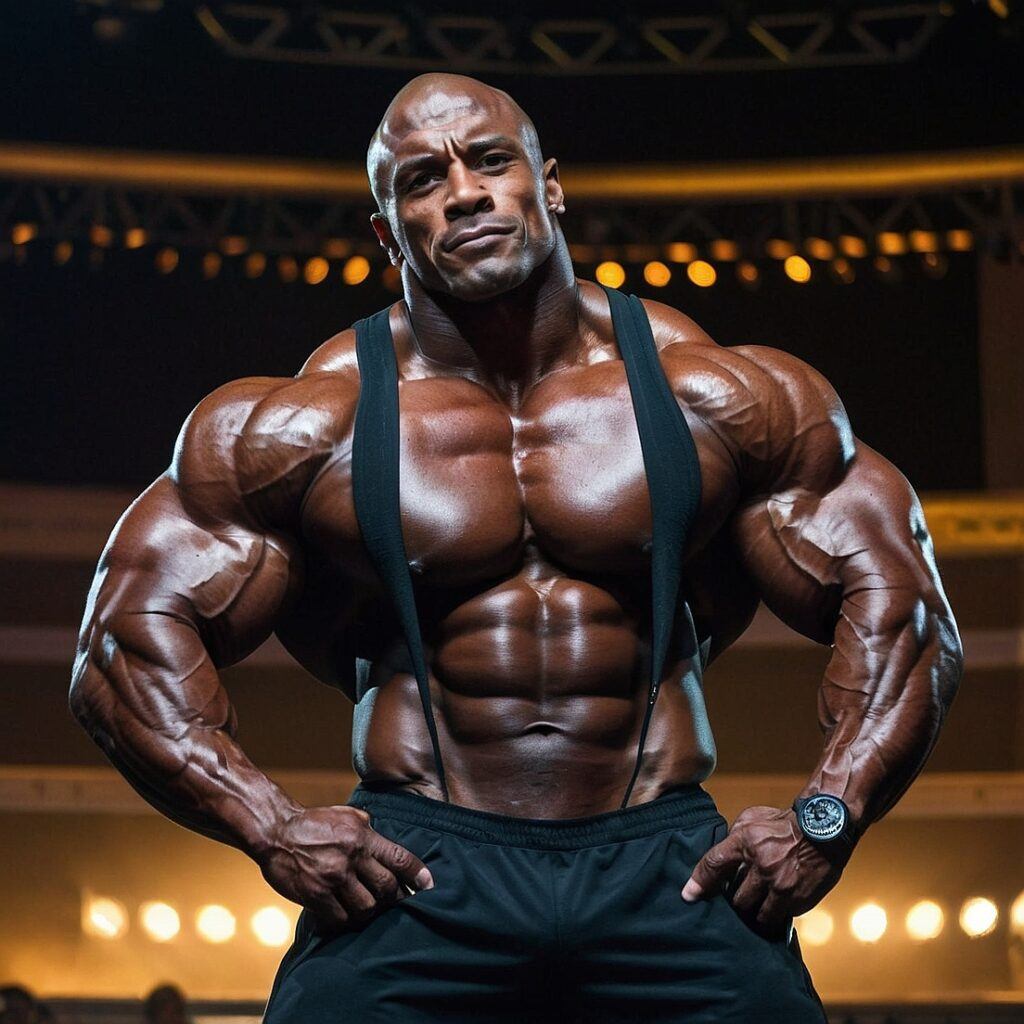
Bodybuilding centers on muscle hypertrophy and aesthetics. The goal is to sculpt a symmetrical, defined physique through a variety of exercises targeting individual muscle groups. Bodybuilders often use higher reps with moderate to heavy weights, focusing on muscle isolation and achieving a “pump.” This approach, which emphasizes volume and meticulous attention to muscle detail, is effective for maximizing sarcoplasmic hypertrophy, contributing to overall muscle size and a well-defined appearance. While bodybuilding may not prioritize raw strength as much as powerlifting, it plays a crucial role in shaping the physique by increasing muscle volume and definition.
Comparison of Methods and Objectives in the Two Disciplines
Training Methods
Powerlifting training is characterized by its simplicity and focus on the big three lifts. The routines are straightforward, with a clear emphasis on lifting heavy and improving maximal strength. This method promotes superior strength gains and significant muscle hypertrophy, especially when combined with a well-rounded approach that includes accessory work. Conversely, bodybuilding routines incorporate a wide range of exercises to target every muscle group from multiple angles. The emphasis here is on volume, with higher reps and multiple sets to induce muscle growth. While powerlifting focuses on building foundational strength, bodybuilding is key to refining and enhancing muscle size and symmetry through high-volume training.
Objectives
The primary objective of powerlifting is to increase strength in the squat, bench press, and deadlift. Everything revolves around lifting more weight. In contrast, bodybuilding aims to build muscle mass and achieve a balanced, aesthetically pleasing physique. While both disciplines can improve strength and muscle size, the focus and approach differ significantly. For those seeking substantial muscle and strength gains, powerlifting provides a strong foundation, but bodybuilding’s emphasis on volume and detail is essential for maximizing overall hypertrophy and achieving a sculpted physique.
Diet and Nutrition
Nutrition is crucial for both powerlifting and bodybuilding, but the approaches can vary. Powerlifters often prioritize a diet that supports maximal strength, which might include a higher calorie intake to fuel heavy lifting sessions. Bodybuilders, however, often focus on a diet that supports muscle growth and fat loss, incorporating calorie cycling and meticulous macronutrient management. Despite these differences, the foundation of strength built through powerlifting can enhance the effectiveness of a bodybuilding diet, leading to more efficient muscle growth and better overall performance.
Recovery and Injury Considerations
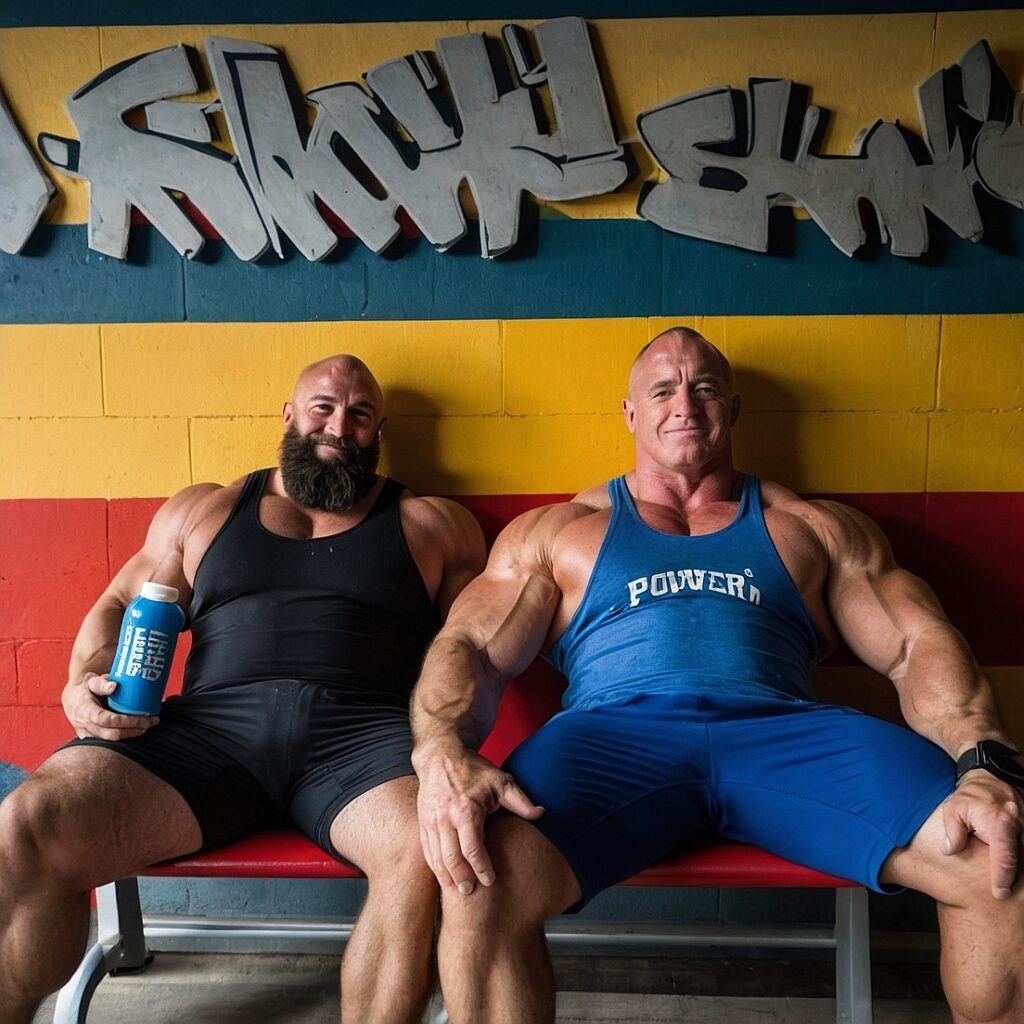
Recovery strategies differ between the two disciplines. Powerlifters emphasize rest and recovery to maintain peak performance in their lifts, often incorporating deload weeks and active recovery. Bodybuilders, focusing on muscle growth, also prioritize recovery but may train more frequently with split routines to allow individual muscle groups to recover while others are being trained. Warming up before lifting heavy is crucial for preventing injuries, and while stretching has mixed reviews regarding hypertrophy, ensuring adequate recovery and proper form is essential in both disciplines.
Analyzing the Debate Over Which Approach Yields Better Results for Muscle Gain and Strength
Strength Gains
Powerlifting is unparalleled in building raw strength. The heavy lifting and focus on the big three compound movements create a solid foundation of strength. Bodybuilding, while primarily focused on hypertrophy, also contributes to strength gains, particularly through increased muscle mass, which can support heavier lifts. However, powerlifting tends to produce more substantial strength gains due to its focus on maximal loads.
Muscle Gain (Hypertrophy)
While powerlifting is excellent for building strength and foundational muscle mass, bodybuilding is particularly effective for maximizing hypertrophy through high-volume training. The combination of both approaches can lead to optimal muscle growth—powerlifting to build strength and size, and bodybuilding to enhance muscle volume and definition. Incorporating elements of both into your routine ensures that you are not only strong but also aesthetically balanced and muscular.
Individual Goals and Preferences
Ultimately, the choice between powerlifting and bodybuilding depends on your personal goals. If you’re looking to build maximal strength and enjoy the challenge of lifting heavy, powerlifting might be your path. If your goal is to achieve a sculpted, aesthetic physique, bodybuilding could be the better option. However, for many, a combination of both approaches will yield the best results—using powerlifting to build strength and size, and bodybuilding to refine and maximize muscle volume.
Benefits of Starting with Powerlifting
Powerlifting’s Advantages in Building Foundational Strength
Starting with powerlifting can provide a strong foundation for any fitness journey. The emphasis on compound lifts helps develop overall strength and muscle coordination, which are beneficial in any athletic or bodybuilding pursuit.
My Personal Experience: How Powerlifting Accelerated My Size and Strength Gains
In my own experience, incorporating powerlifting into my training routine significantly accelerated my size and strength gains. The heavy lifts not only increased my strength but also contributed to muscle growth. It wasn’t until I started powerlifting that people began asking if I was a competitive bodybuilder. Before incorporating powerlifting, I didn’t even look like a bodybuilder, even when I was lean.
Incorporating Exercises for Lagging Body Parts
While powerlifting focuses on the big lifts, it’s beneficial to include exercises targeting lagging body parts like calves and biceps. This approach ensures balanced muscle development and addresses any weaknesses that might be overlooked in a pure powerlifting routine.
The Vital Role of Volume
Volume plays a crucial role in both powerlifting and bodybuilding. While powerlifters often train with lower reps, incorporating higher volume through accessory exercises can aid in injury prevention and enhance muscle hypertrophy. Bodybuilding’s high-volume approach complements powerlifting, making it an essential component of a well-rounded training regimen.
Unraveling Bodybuilding Myths and Misconceptions
Conflicting Information in the Bodybuilding Industry
The bodybuilding world is rife with conflicting information about training techniques, nutrition, and recovery. It’s easy to get lost in the sea of advice, from the importance of the “pump” to the best rest periods between sets.
Debunking Myths About the ‘Pump,’ Stretching, Training Weights, and Rest Periods
Let’s debunk some common myths:
- The “pump” isn’t the be-all and end-all of muscle growth. While it feels good and indicates blood flow to the muscles, hypertrophy results from progressive overload, volume, and proper nutrition.
- Stretching has conflicting opinions regarding its impact on hypertrophy and injury prevention. What is crucial, however, is warming up properly before lifting heavy to prevent injuries.
- Training weights and rest periods should be tailored to your goals and current fitness level, rather than following a one-size-fits-all approach.
A Common-Sense Approach to Training
A common-sense approach to training, focusing on consistent progress, balanced nutrition, and adequate recovery, often yields better results than following rigid bodybuilding or powerlifting prescriptions alone. Combining the strengths of both disciplines allows for a more versatile and effective fitness journey.
Powerlifting Approach: A Versatile Foundation for Most People
Practical Guide to a Powerlifting Regime Tailored for Hypertrophy and Aesthetics
A powerlifting regime can be tailored for hypertrophy and aesthetics by incorporating accessory exercises and focusing on muscle growth alongside strength. For example, combining heavy compound lifts with isolation exercises can create a balanced routine that promotes both strength and size.
Enhancing Athletic Performance Across Sports
Powerlifting’s emphasis on compound movements and overall strength can enhance athletic performance across various sports. The improved strength and power translate well into activities like football, basketball, and even endurance sports.
Balanced, Powerlifting-Centric Regimen
A balanced regimen that centers on powerlifting but includes additional isolation work and a focus on diet can lead to an impressive physique. This approach ensures you’re building strength while also developing muscle size and definition.
Addressing Individual Variances
It’s important to acknowledge that everyone responds differently to training styles. Some people might see better results with a bodybuilding approach, focusing more on volume and muscle isolation. Listening to your body and adjusting your training accordingly is key to achieving the best results.
Conclusion
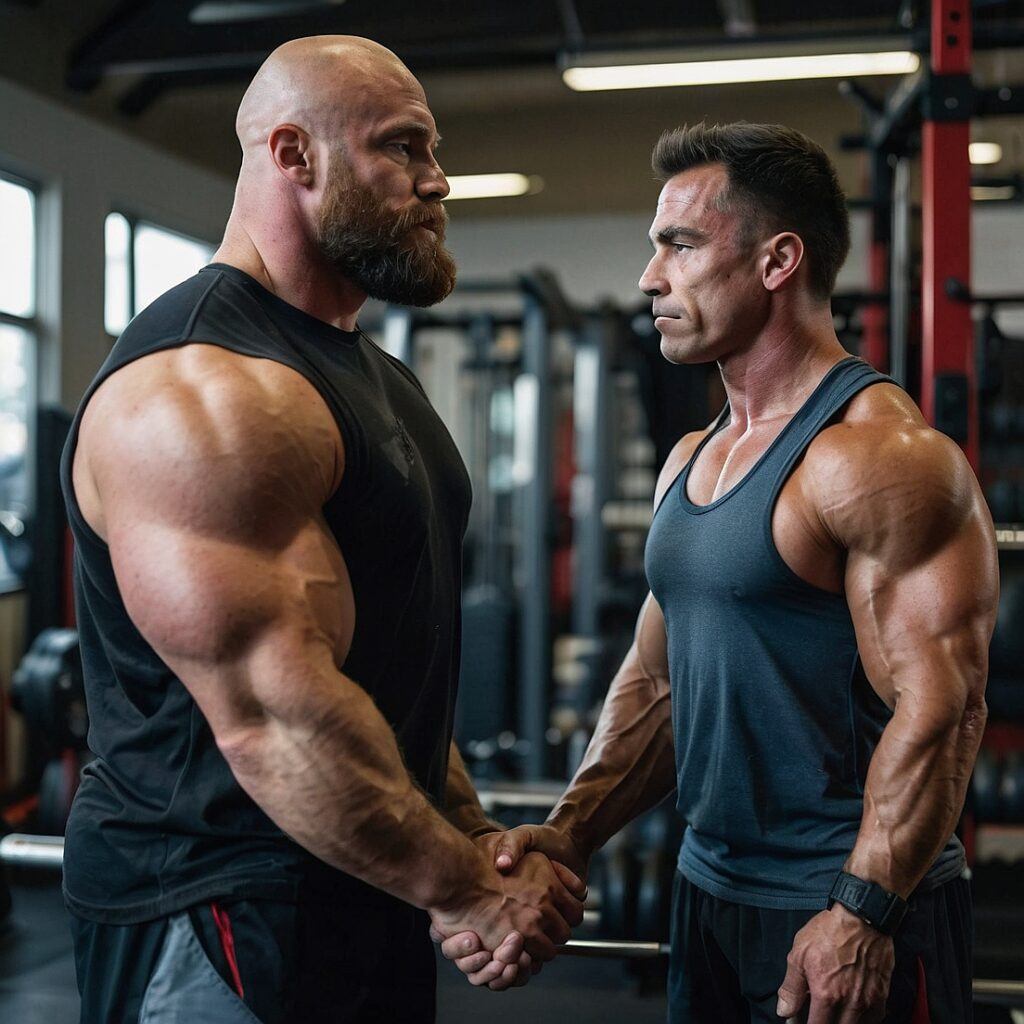
Choosing between powerlifting and bodybuilding ultimately comes down to your personal goals and preferences. Both disciplines offer unique benefits, and incorporating elements from both can provide a well-rounded fitness routine. For most people, powerlifting will lead to significant strength and muscle gains, while bodybuilding will enhance muscle volume and definition. By understanding the fundamentals and tailoring your training to your needs, you can achieve a strong, sculpted physique that performs as well as it looks.
David Crowther, also known as Dr. David Gainz, has over 32 years of experience in bodybuilding and a professional background as both a pharmacist and dentist. With a passion for science-backed training methods, David combines his extensive knowledge of human physiology with decades of hands-on experience in strength and hypertrophy training.

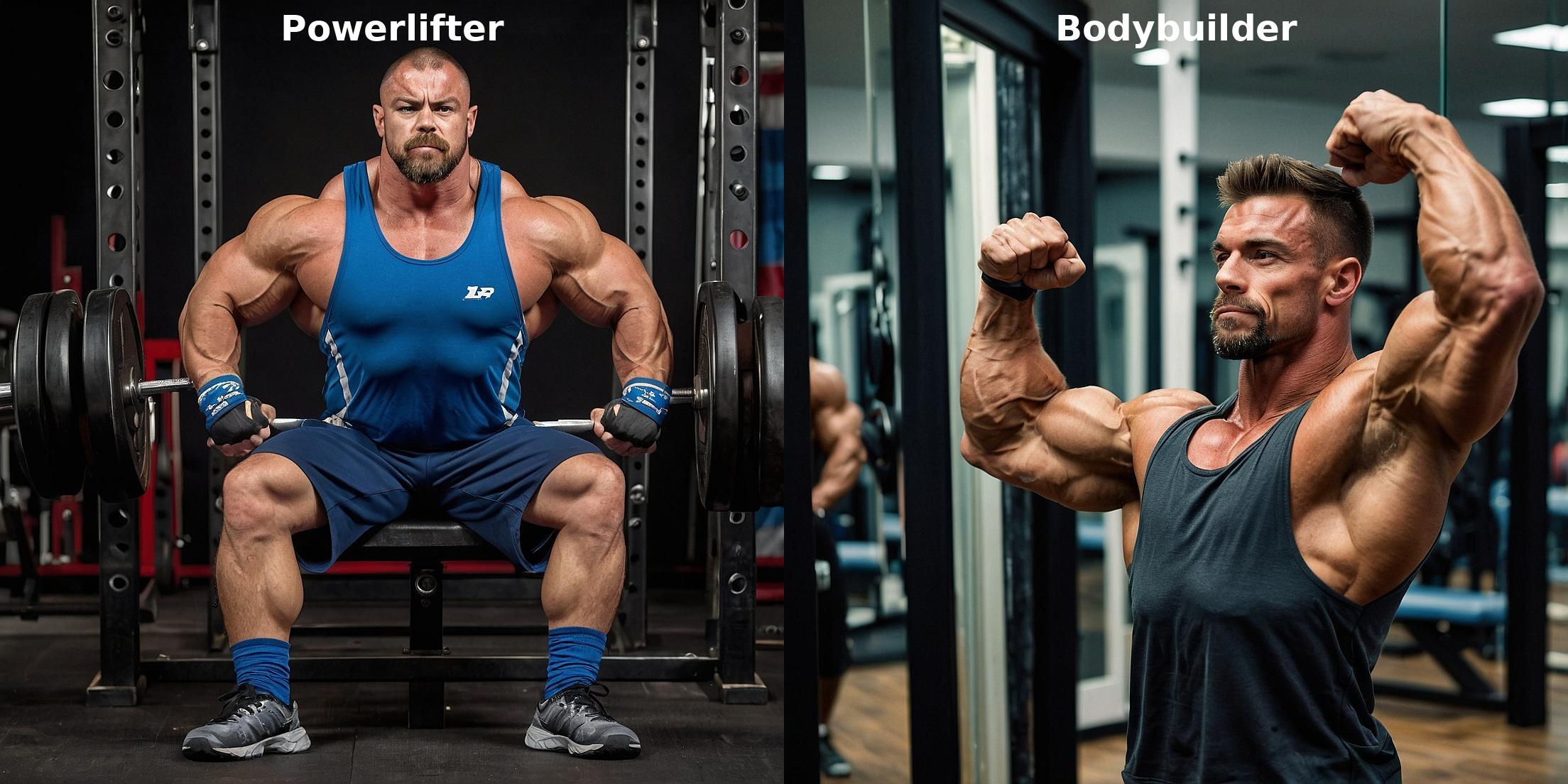
I’ve known a bodybuilder a while ago. He was very dedicated in his training, his diet, and he would tell me some stuff that you wrote about in your article. And it’s so true that you have lots of conflicted information about how you should succeed as a bodybuilder! And I always confused powerlifting and bodybuilding so I’m very happy that you gave details about the difference between the two!
Thanks for contributing. Good to know I’m not alone with my thoughts on the topic.
Hi,
This is a very interesting comparison of powerlifting and bodybuilding. I can see now the differences. As a 67 year old man that’s about 30 lbs overweight, I’m not sure if either is correct for me. My concern about muscle is too keep muscle toned as I’ve heard a serious problem for seniors is become frail and losing muscle. What kind of training would you suggest for someone like me?
– Scott
Hi Scott
I’d still recommend doing a powerlifting based workout. I’d start off nice and easy and focus on getting your form correct before you start pushing yourself hard. Also, if any of the lifts hurt, then perhaps switch ot to something else as similar as possible that doesn’t hurt. For example at the moment my shoulders hurt too much to dona conventional squat, so instead I’m doing Bulgarian split squats. Once the pain has gone I will try conventional squats again. If you want to also lose weight, I’d recommend that you add on regular low intensity cardio and try to fill up.on vegetables and fruit which should help you eat less calories.
I’ve been torn between the two myself and found the insights really helpful. I love lifting heavy, so powerlifting has always appealed to me, but I’m also drawn to the aesthetics of bodybuilding. It’s tough figuring out which path to choose. Have you found that focusing on one has impacted your overall fitness journey? I’m curious if you think it’s possible to incorporate elements of both into a balanced routine.
Great question Andy!
I’m glad you like lifting heavy and that you also want to look aesthetic. I feel the exact same way. Fortunately you don’t have to choose one path because you can train like a powerlifter and lift heavy on the main lifts and also work on lagging body parts by adding in some isolation work like a bodybuilder.
I mostly focus on training like a powerlifter because I think gaining muscle is the most important thing to do and in my opinion training like a powerlifter will produce the most muscle gains. If you get stronger you absolutely will put on muscle. When I focus on bodybuilding style training I find I lose size and strength and it’s difficult to get stronger from one workout to the next. It’s important to note that you shouldn’t go less than 5 sets of 5 reps for the three main lifts though. If you train less than that muscular hypertrophy does seem to be reduced.
The most important thing to do if you want to look aesthetic is to restrict your calories and add some cardio to your training regimen. That will result in fat loss and that visible 6 pack. The second most important thing is to add in isolation exercises on top of the three main powerlifting exercises to make sure your body is in good proportions. For me, my calves will seriously lag behind the rest of my body if all I do is powerlifting, so I work my calves at least twice a week.
What an interesting read, i’m going to have to say i honestly did not know that there was a difference. But i do know now. your article is very well laid out with lots of very interesting information.
So does a bodybuilder start out then over time switch to power-lifter ?
Or is it the other way around?
fantastic article thanks for sharing
Thanks for the kind words! I’m glad you found the article informative. The difference between bodybuilding and powerlifting can definitely be confusing at first, but it’s great that you’re exploring it.
Typically, whether someone starts as a bodybuilder or a powerlifter depends on their initial goals. Some people do start with bodybuilding to build a strong foundation of muscle and then transition into powerlifting to focus more on strength. Others might start with powerlifting to develop raw strength and then switch to bodybuilding if they want to emphasize muscle size and aesthetics later on. Personally, zi have a slight bias towards starting with powerlifting, but keeping the reps at least 5 and using 3 to 5 sets for each exercise. This is a great way to get really strong and also has high enough volume to stimulate the muscles to grow.
Both paths have their benefits, and it really comes down to what excites you and aligns with your goals. If you’re interested in how different training approaches can work together for better results, you might enjoy my article on the Gainz Equation, which dives into optimizing your training for both strength and hypertrophy.
Thanks again for the feedback, and feel free to reach out if you have any more questions!
“Great article! The detailed comparison between powerlifting and bodybuilding really helps in understanding the key differences and benefits of each approach. I’m curious, though—do you think there’s a way to combine elements of both powerlifting and bodybuilding in a training program, or would that dilute the effectiveness of each? Also, for someone just starting out, how would you recommend deciding which path to pursue based on their fitness goals?”
Thanks for the feedback! I’m glad you found the comparison helpful. Combining elements of both powerlifting and bodybuilding in a training program can actually be a great approach. It’s sometimes called “powerbuilding,” and it allows you to build strength while also focusing on muscle hypertrophy Personally, this is how i like to train because i want to be big and strong. The key is to structure your program in a way that prioritizes your main goal, whether that’s strength or size, and then incorporate secondary elements from the other discipline. I find it easier to do powerlifting with no fewer than 5 sets for 3 to 5 sets and add isolation work in and work those exercises more like a bodybuilder and it works very well for me.
For someone just starting out, I’d recommend considering what excites you more: lifting heavy and pushing your strength limits (powerlifting), or sculpting and building muscle mass (bodybuilding). If you’re after strength with some muscle growth, start with a powerlifting base and add in hypertrophy work. If aesthetics are your main goal but you still want to get strong, start with a bodybuilding base and include some heavy, lower-rep work.
Ultimately, your goals should dictate your path, but remember—there’s no one-size-fits-all answer. Experiment, see what your body responds to, and don’t be afraid to mix things up as you go.